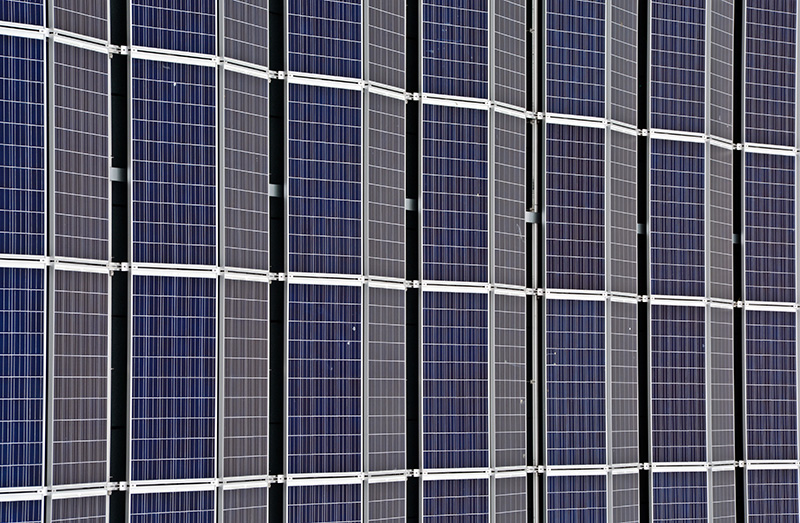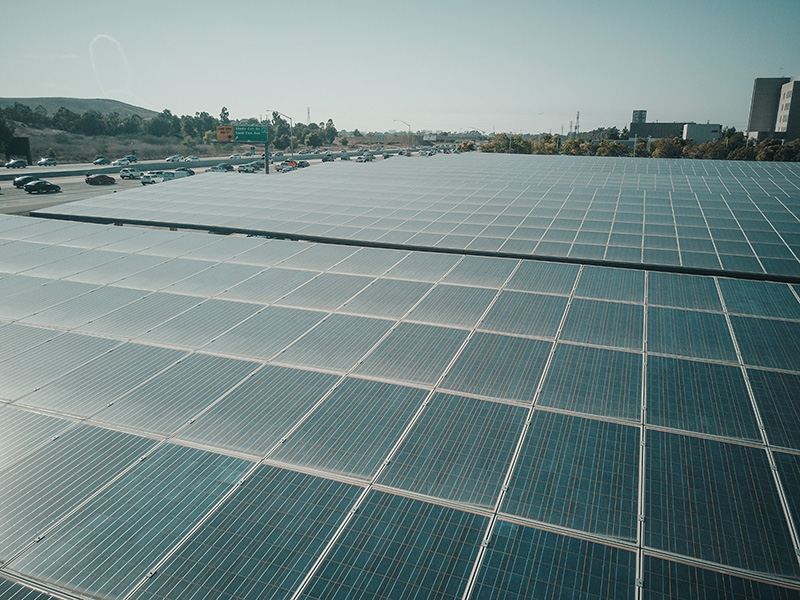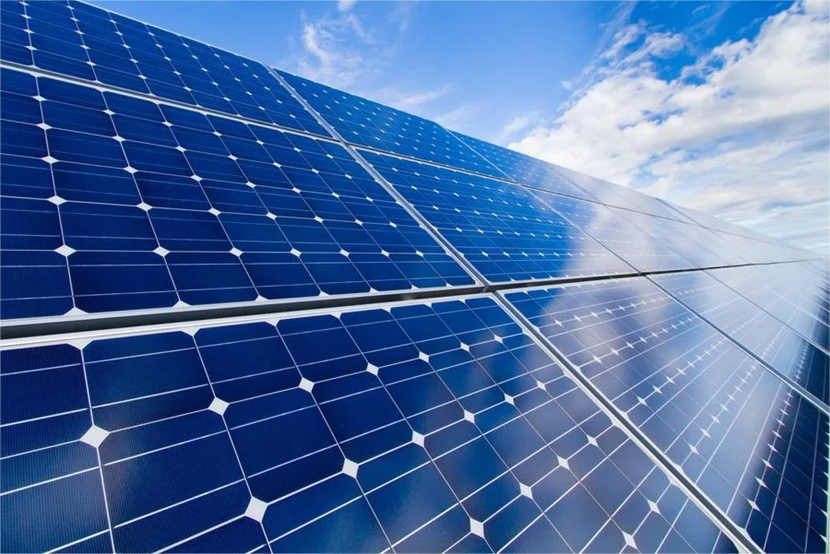Description
The most efficient types of solar cells for residential use are generally monocrystalline solar cells, known for their higher efficiency rates compared to other types. They are constructed from a single crystal structure, allowing electrons more room to move and thereby generating more electricity. While they tend to be more expensive, their higher efficiency and space-saving characteristics make them a popular choice for residential applications. Other options, such as polycrystalline and thin-film solar cells, may also be suitable depending on specific needs, budget, and available space.
Different Types of Solar Cells
Monocrystalline Solar Cells
Monocrystalline solar cells are made from a single crystal structure. They are known for their high efficiency and sleek appearance.
- Composition: Made from single-crystal silicon, offering a more uniform appearance.
- Efficiency: Generally offers the highest efficiency rates, around 15-20%.
- Cost: Tends to be more expensive due to the manufacturing process.
- Appearance: Black in color and known for their aesthetic appeal.
- Usage: Ideal for residential rooftops with limited space.
Polycrystalline Solar Cells
Polycrystalline solar cells consist of multiple crystal structures. They are popular for their balance between efficiency and cost.
- Composition: Made from melted silicon fragments fused together.
- Efficiency: Slightly lower efficiency compared to monocrystalline, typically around 13-16%.
- Cost: Generally more affordable.
- Appearance: Blueish hue due to multiple crystal structures.
- Usage: Suitable for various residential applications where space is not a constraint.
Thin-Film Solar Cells
Thin-film solar cells represent a different approach, using layers of material only a few micrometers thick.
- Composition: Can be made from a variety of materials, including amorphous silicon, cadmium telluride, and CIGS.
- Efficiency: Lower efficiency rates, usually around 7-12%.
- Cost: Often cheaper due to reduced material costs.
- Appearance: Flexible and lightweight, offering a more streamlined look.
- Usage: Ideal for large-scale installations or areas where weight is a concern.
Multi-Junction Solar Cells
Multi-junction solar cells use multiple layers of material to capture different parts of the solar spectrum, maximizing efficiency.
- Composition: Composed of layers of different semiconductors, each designed to absorb a specific wavelength.
- Efficiency: Offers very high efficiency, often above 30%, especially in concentrated solar applications.
- Cost: Typically more expensive due to complex manufacturing.
- Appearance: Similar in appearance to monocrystalline cells.
- Usage: Often used in specialized applications such as space technology or concentrated solar power.
Organic Photovoltaic Cells
Organic photovoltaic cells use organic materials to convert sunlight into electricity.
- Composition: Made from carbon-based materials like polymers.
- Efficiency: Generally lower efficiency, around 5-10%.
- Cost: Potentially more affordable and flexible in production.
- Appearance: Can be transparent or colored, offering unique design possibilities.
- Usage: Suitable for applications like building-integrated photovoltaics or decorative installations.
The above details provide a comprehensive understanding of the various types of solar cells, shedding light on their composition, efficiency, cost, appearance, and suitability for different applications. Whether one is considering solar energy for home use, commercial buildings, or specialized applications, these insights will guide the selection of the appropriate solar cell technology.
Efficiency of Various Solar Cells
Factors Determining Efficiency
Efficiency in solar cells refers to the percentage of sunlight that's converted into usable electricity. Several factors can influence this efficiency:
- Material Quality: The purity and quality of materials used directly impact the efficiency.
- Design and Construction: The design, including the thickness and arrangement of materials, plays a crucial role.
- Environmental Factors: Sunlight intensity, angle of incidence, and temperature can all affect how efficiently solar cells operate.
- Age and Degradation: Solar cells lose efficiency over time due to wear and tear.
Comparative Analysis
Here's a comparative analysis of different types of solar cells considering various aspects:
| Type |
Material Quality |
Design Flexibility |
Environmental Sensitivity |
Longevity |
Efficiency |
| Monocrystalline Solar Cells |
✔ |
❌ |
✔ |
✔ |
✔ |
| Polycrystalline Solar Cells |
✔ |
✔ |
✔ |
✔ |
❌ |
| Thin-Film Solar Cells |
❌ |
✔ |
❌ |
❌ |
❌ |
| Multi-Junction Solar Cells |
✔ |
❌ |
✔ |
✔ |
✔ |
| Organic Photovoltaic Cells |
❌ |
✔ |
✔ |
❌ |
❌ |
- ✔indicates a positive aspect.
- ❌indicates a negative or less favorable aspect.
Latest Developments and Innovations
The solar industry continues to innovate, focusing on improving efficiency, longevity, and reducing costs.
- New Materials: Research into materials like perovskitesis paving the way for potentially higher efficiency and more cost-effective solutions.
- Advanced Designs: Technologies such as bifacial solar panels, which capture sunlight on both sides, are contributing to increased efficiency.
- Integration with Other Technologies: Combining solar cells with other renewable energy technologies, such as wind or hydro power, creates more consistent and efficient energy solutions.
- Smart Technology Integration: Implementing smart technology to track the sun's movement, known as solar tracking, can significantly enhance efficiency by keeping the solar cells aligned with the sun.
The landscape of solar cell efficiency is complex, influenced by a multitude of factors. Continuous research and innovation are driving the development of more efficient, adaptable, and sustainable solar technologies. The comparative analysis above illustrates the varying strengths and weaknesses across different types of solar cells, offering insights for individuals and industries looking to harness solar energy effectively.
Cost and Economic Considerations
Initial Installation Costs
Installing solar energy systems involves various costs, including materials, labor, permits, and inspections. These can vary depending on the type of solar cells and the complexity of the installation.
- Monocrystalline Solar Cells: Typically, these are the most expensive, ranging from $3,000 to $5,000 per kW.
- Polycrystalline Solar Cells: Costs are generally moderate, ranging from $2,500 to $4,000 per kW.
- Thin-Film Solar Cells: These are usually the most affordable, ranging from $2,000 to $3,000 per kW.
- Multi-Junction Solar Cells: Specialized applications make these more expensive, with costs varying widely.
- Organic Photovoltaic Cells: Costs are generally lower, but these are still an emerging technology.
Maintenance Costs
Solar energy systems require periodic maintenance to ensure optimal performance. Here are the common maintenance considerations:
- Cleaning: Regular cleaning is needed, especially in dusty areas. Typical costs range from $10 to $30 per panel annually.
- Inspections: Professional inspections are recommended every few years. This can cost between $150 to $300 per inspection.
- Repairs: While generally low-maintenance, repairs can range from $100 to $3,000, depending on the issue.
Government Incentives and Subsidies
Many governments around the world provide incentives and subsidies to promote the adoption of solar energy. These can significantly offset initial costs.
- Tax Credits: In the United States, the Investment Tax Credit (ITC)provides a 26% tax credit for solar systems installed by the end of 2022.
- Grants and Rebates: Various grants and rebates are available, potentially covering up to 30-50% of the initial costs.
- Feed-in Tariffs: Some countries offer feed-in tariffs for excess energy fed back into the grid, providing ongoing financial incentives.
- Net Metering: Net meteringallows solar energy users to sell unused energy back to the grid, further offsetting costs.
The economic considerations of solar energy involve various costs and benefits, from initial installation to ongoing maintenance and governmental support. Understanding these aspects is vital for making informed decisions on the right type of solar technology for a specific application. With appropriate consideration of the unique needs, location, and available incentives, solar energy can be a highly viable and economically attractive solution for both individuals and businesses.
Environmental Impact
Carbon Footprint Reduction
Solar energy plays a vital role in reducing carbon emissions, a critical factor in combating climate change.
- Reduction of Greenhouse Gases: Solar energy systems emit no greenhouse gases during operation. Replacing traditional energy sources with solar can significantly reduce carbon emissions.
- Energy Production: A typical residential solar PV system can reduce three to four tons of carbon dioxide emissions per year.
- Comparison with Fossil Fuels: Solar energy's carbon footprint is over 90% smaller per unit of electricity generated compared to coal.
- Global Impact: The widespread adoption of solar energy can make a substantial contribution to achieving the goals of international agreements like the Paris Agreement.
Recycling and Sustainability
The sustainable production and recycling of solar panels are crucial for minimizing environmental impact.
- Material Use: Utilizing recyclable and renewable materials in the manufacturing of solar panels is essential for sustainability.
- Recycling Programs: Many countries have implemented solar panel recycling programs to recover valuable materials like silicon, metals, and glass.
- Life Cycle Analysis: Considering the entire life cycle of solar panels, from production to recycling, ensures a sustainable approach.
- Reduction of Waste: Proper recycling can minimize waste in landfills, contributing to an environmentally friendly lifecycle.
Impact on Local Ecosystems
While solar energy has numerous environmental benefits, the impact on local ecosystems must also be considered.
- Land Use: Large solar farms can disrupt local ecosystems if not properly planned. It's vital to choose locations that minimize harm to local flora and fauna.
- Water Use: Some solar technologies, like concentrated solar power (CSP), require water for cooling. Proper management is essential to prevent negative impacts on local water resources.
- Wildlife Considerations: Proper design and placement of solar installations can minimize the impact on local wildlife, such as migratory bird paths.
- Community Engagement: Collaborating with local communities ensures that solar energy projects align with ecological preservation goals and social considerations.
The environmental impact of solar energy is multifaceted, encompassing carbon footprint reduction, recycling and sustainability considerations, and potential effects on local ecosystems. By thoughtfully addressing these aspects, solar energy not only provides a renewable energy source but also contributes positively to environmental conservation and sustainability. Whether for individual homeowners or large-scale energy producers, understanding and integrating these environmental considerations can lead to more responsible and effective use of solar energy.
Practical Implementation for Residential Use
System Design and Planning
Proper system design and planning are crucial steps in implementing solar energy in residential applications.
- Assessment of Energy Needs: Before anything else, understanding the household's energy consumption patterns is vital. This information helps in sizing the solar system to meet daily and seasonal energy needs.
- Site Analysis: Assessing the site for factors like sunlight availability, shading, and orientation ensures the optimal placement of solar panels. Tools like solar pathfinders can be used for accurate analysis.
- Selection of Solar Panels: Choosing the right type of solar panel is key. Brands like TongWei offer various options that cater to different needs and budgets.
- Inverter Selection: The inverter converts the direct current (DC) produced by the solar panels into alternating current (AC) for household use. Selecting the right inverter ensures efficiency.
- Compliance with Regulations: Adhering to local building codes and regulations is essential to avoid legal complications.
- Cost Estimation and Financing: Preparing a detailed cost estimate and exploring financing options, including potential subsidies or incentives, makes the project financially feasible.
Integration with Existing Electrical Systems
Integration with existing electrical systems requires careful planning and expertise.
- Compatibility: Ensuring compatibility between the solar system and existing electrical infrastructure avoids potential integration issues.
- Grid Connection: Connecting to the grid allows homeowners to sell excess energy back, but this requires compliance with grid connection standards and possibly additional equipment.
- Safety Considerations: Proper grounding, overcurrent protection, and adherence to electrical codes ensure safe integration.
- Monitoring and Control: Installing monitoring systems allows homeowners to track energy production and consumption. Some brands, including TongWei, offer integrated monitoring solutions.
- Maintenance Planning: Regular maintenance is vital for optimal performance. A maintenance schedule should be planned, and necessary tools and procedures should be in place.
Potential Challenges and Solutions
While solar energy offers many benefits, potential challenges need to be considered and addressed.
- Weather and Seasonal Variations: Solar energy production can be affected by weather and seasonal changes. Solutions include using battery storage or hybrid systems to ensure continuous power.
- Aesthetic Concerns: Some homeowners may have concerns about the appearance of solar panels. Careful design and the use of aesthetically pleasing options can address this issue.
- Space Limitations: In urban areas, space may be a limiting factor. Solutions include using more efficient panels or integrating solar panels into building materials.
- Technology Changes: Rapid changes in solar technology might make existing systems obsolete. Staying informed and planning for possible upgrades ensures long-term satisfaction.
Conclusion
Practical implementation of solar energy in residential settings is a complex but manageable process that requires careful planning, design, integration, and anticipation of potential challenges. From selecting the right solar panels and inverters to integrating with existing electrical systems, each step should be thoughtfully executed. Brands like TongWei and adherence to best practices can contribute to a successful implementation. Homeowners seeking to harness solar energy should consult with experienced professionals and adhere to local regulations to make the transition as smooth and beneficial as possible.
Learn more about solar energy and its potential for residential use.



